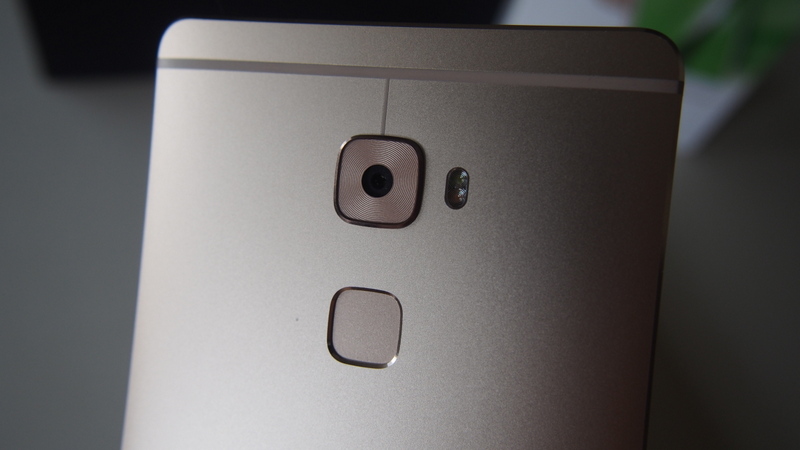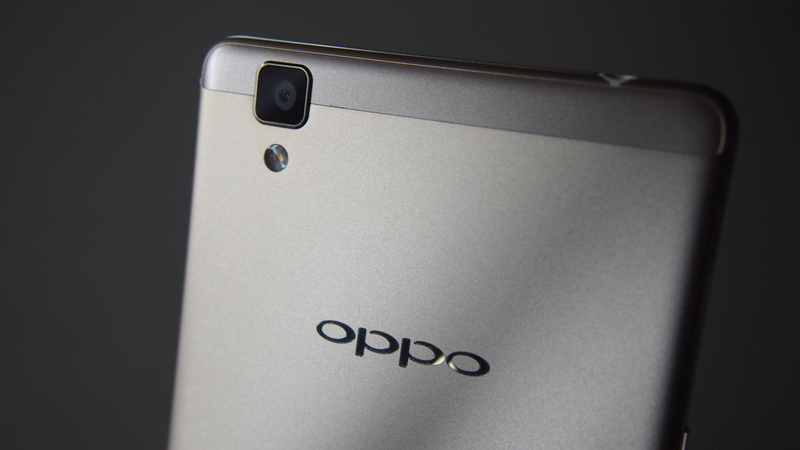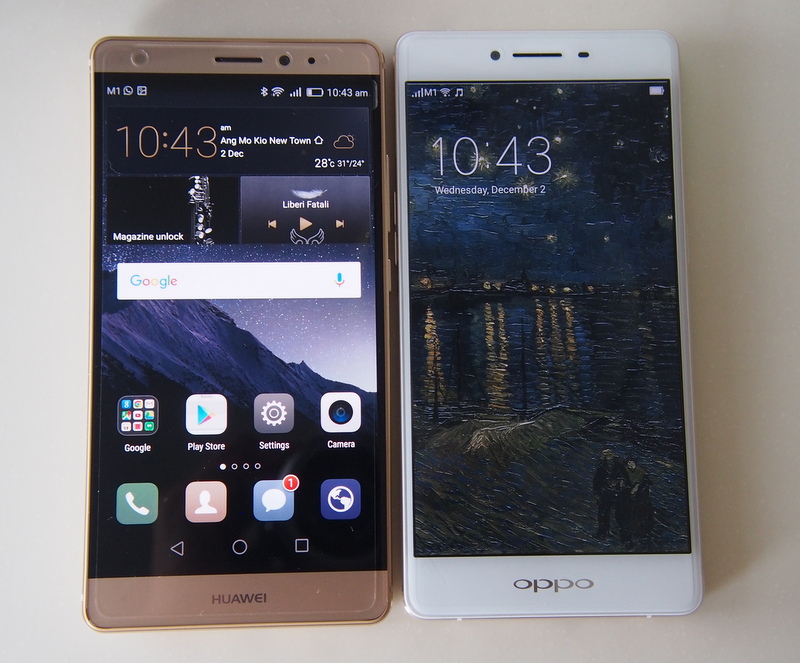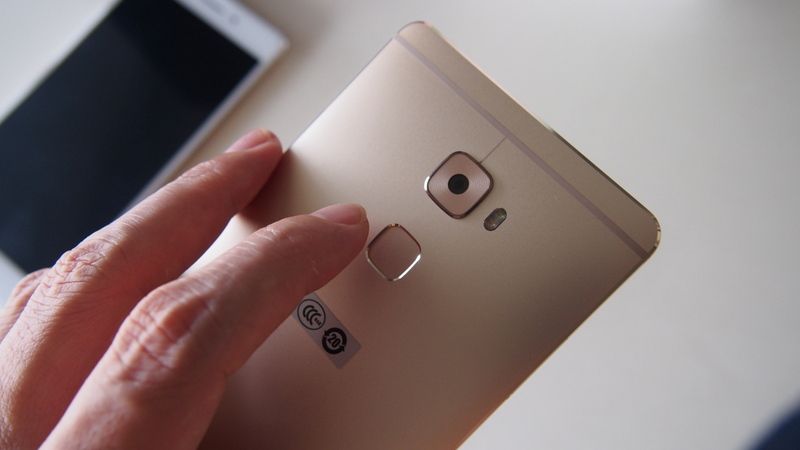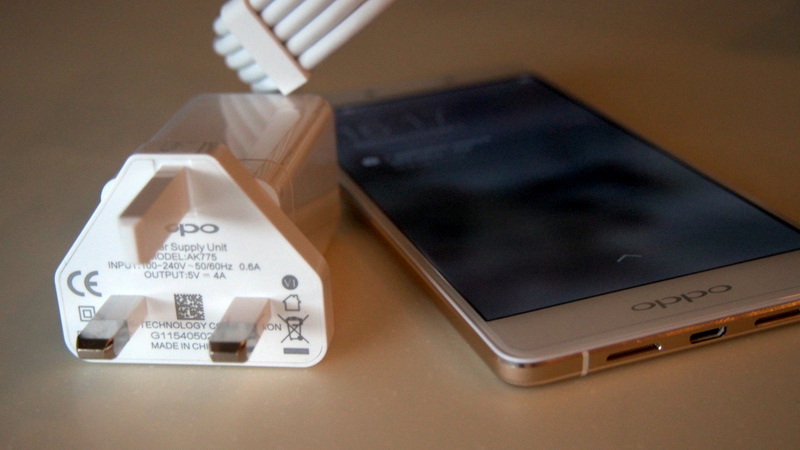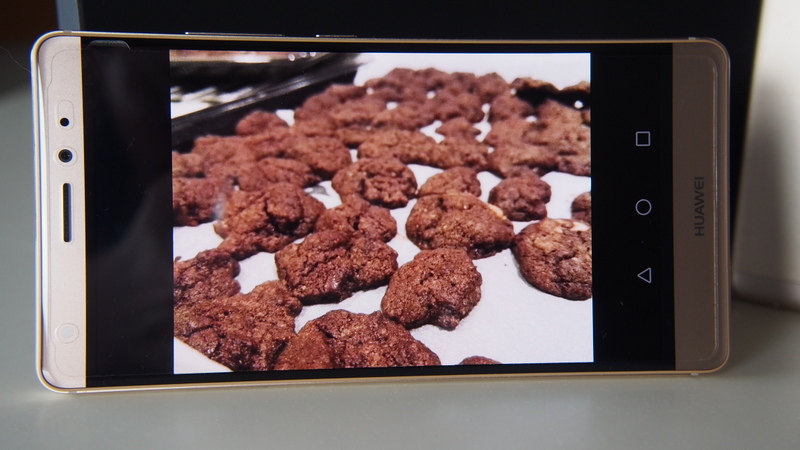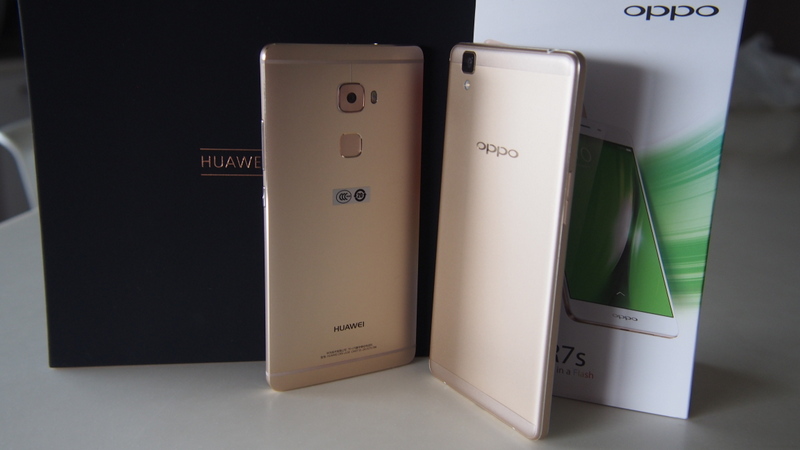Review: Huawei Mate S vs. Oppo R7s
By Keith Liu December 3, 2015
Huawei Technologies and Oppo Electronics are two of the fastest growing smartphone brands from China, and both firms have made big strides in countries outside of their domestic market China, especially in the last two years.
The recent launches of the Huawei Mate S and the Oppo R7s then, gave us good reason to put their latest devices to the test and draw some comparisons, since both smartphones utilise similar build materials and targeted at the upper mid-range to premium segment.
Price-wise though, the Mate S is considerably more expensive, so let’s start with that:
- Huawei Mate S: S$999 / RM2,698
- Oppo R7s: S$599 / RM1,898
Winner: Coming at a price that’s 40% lower, the Oppo R7s takes this round since consumers generally prefer to pay less, even those who are swimming in cash.
Design
The Huawei Mate S and Oppo R7s are both fashioned out of a single block of metal and are lovely to look at.
Huawei’s model comes is clad in gold both at the back and in front, while Oppo’s device is available in both gold and rose gold colours, though the front is white. Some may dig the metallic rose gold finish, since that’s quite unique among Android smartphones.
The Mate S however looks more distinctive with its gentle sloping back and sits really well in the palm of the hand. This gives it a thickness of only 7.2mm at the side edges. At the back, you will also see the main camera, mounted near the top in the center with a fingerprint sensor below that.
The Oppo R7s doesn’t come with any biometric sensors, and therefore has a very clean, flat back with the rear camera positioned close to the top edge at the left corner. But it’s slimmer than the Mate S, at 6.95mm.
On the front, the Mate S display seems to be all-screen and minimal bezels, with super-thin metal edges on the sides. But once the screen is lit up, you can clearly see the black frame around the screen, instantly killing the illusion.
In contrast, the R7s hides most of the black bezels around the display with its white borders, giving it a picture frame quality about it.
Both companies have done an excellent job in reducing the bezels around the display, resulting in a higher screen to body ratio. As such, they don’t feel overly large despite the fact that they’re actually phablets with 5.5 inch displays.
Winner: Huawei Mate S if you like gentle slopes, bezel-less design and a camera positioned in the center. Oppo R7s if you like rose gold, a flat, slim design and a white border around the display.
Hardware features
The Huawei Mate S, as mentioned comes with a fingerprint reader as a hardware security option. It works well and it is fast. Placed behind the phone where our index finger would naturally rest, it’s especially convenient if you have business apps and e-mail accounts that make device security mandatory.
Oppo didn’t fit the R7s with a fingerprint sensor, and it also dropped near-field communications (NFC), which is something that is available on the Mate S. While there aren’t that many usage scenarios that require NFC, it does make pairing up with other NFC-enabled devices a lot simpler.
The 128GB version of the Mate S also comes with a ‘force touch’ feature but that variant isn’t for sale in this region, so didn’t get to test that out.
Meanwhile, the Oppo goes one up in terms of battery life and fast charging. Oppo’s battery at 3070mAh is beefier than the 2700mAh battery found in the Mate S.
While using the Mate S, we needed to ensure we started our day at 100%, otherwise we would be juiced out by the time early evening arrived. While we were actively using the device and having the screen on a lot of the time, for most people it would probably last till the night, but it definitely won’t last beyond a day.
The Oppo performed slightly better, although not by that much especially if you keep the screen on a lot. What’s nice about Oppo though, is the fast charging capability, called ‘Vooc flash charge’, which provides the R7s up to 2 hours of talk time with about 5-6 minutes of charging.
Winner: Huawei Mate S if you want a fingerprint sensor and NFC, Oppo R7s if you rely on fast charging to keep your battery juiced up.
Display
This is a tough one to call since both devices utilise AMOLED displays that come with rich colour saturation, high brightness levels and truly black blacks. Both 5.5-inch screens are in Full HD (1920 x 1080) resolution with 401 pixels per inch, so they’re even in terms of sharpness.
The more obvious difference is in the software, as the Mate S lets you change the colour temperature of the display (warmer or colder settings), while the R7s has an ‘eye protection display’ function which removes the reportedly vision-damaging blue light from the display (though you can download apps that do the same thing from Google Play).

The Oppo unit also has a more sensitive auto-brightness setting which reduces the brightness level just a tad too much at times, though this would help with prolonging the device’s battery life.
Winner: For letting us change the colour temperature of the display and the less aggressive auto-brightness settings, we’d have to go with the Huawei Mate S.
Performance
The Oppo R7s is powered by Qualcomm’s Snapdragon 615 chipset, paired with a large 4GB of RAM and decent 32GB of storage, along with support for microSD card for expandable storage.
This is Oppo’s first device to sport 4GB of memory, which allows it to actually run more than a dozen apps easily in the background, even if they’re all memory hogging, graphically intensive 3D games. It definitely helps if you’re using the Chrome browser as well, since this app is pretty resource-hungry especially when you have many tabs open.
While the processor is squarely a mid-range one, the performance on the Oppo is actually impressive and lag-free. It beat the Huawei Mate S on some tests when we put the device through some popular benchmarking apps.
That’s not saying that it’s better, though. The Adreno 405 graphics chip on the 615 is stable (and doesn’t overheat) but it’s not a speed demon, especially when it comes to loading up games. In some racing games like Ubisoft’s Driver Speedboat Paradise, it took at least 20 seconds longer to load up a level compared to the Mate S. The racing action also stuttered at times with uneven frame-rates due to the intensity of the graphics.
Huawei’s device has its own HiSilicon Kirin 935 chipset under the hood with the Mali T628 MP4 graphics chip on duty. Paired with 3GB of RAM and a generous 64GB of storage, the Mate S performs equally well when it comes to all the apps and games we ran on it.
What’s surprising is, with its higher asking price, it didn’t blow the Snapdragon 615 out of the water but lost out on some benchmark scores – pointing to the fact that these two chips performance-wise, are pretty much on par.
Yes, it loads up some game levels a lot faster, but it also faced frame-rate inconsistencies with graphically intensive games.
What about audio performance? Both devices feature single speakers that emanate from the bottom of the unit, but the Huawei’s speaker has more clarity and sounds better compared to Oppo’s one.
However when it comes to listening to music through headphones, Huawei licensed technology from the sound engineers at DTS, but that still couldn’t match the richness and fullness of the sound from the R7s, thanks to Oppo’s legacy in producing high-end audio equipment and some help from the folks at Dirac HD.
Separately, one issue we faced with the Huawei Mate S is that we would lose mobile data connectivity for brief moments every now and then. We suspect it could be due to the fact that we were using a 3G SIM instead of 4G, but we found it hard to replicate and so it remains a mystery to us.
Winner: Oppo R7s (unless you like playing racing games, in which case, Huawei’s Mate S gets the vote).
Camera
Hardware-wise, the Mate S edges out the R7s even though both devices sport 13 megapixel rear cameras and 8 megapixel front cameras, since Huawei baked in optical image stabilisation and a front-facing LED flash, resulting in sharper images in low-light situations, less grainy pictures, and really bright selfies in darkly-lit environments.
We figured a picture says a thousand words when it comes to image quality, so here are some examples (Huawei Mate S photo on the left, Oppo R7s photo on the right). As you may notice, the colours from the Mate S are actually richer, and comes with better contrast too. When zoomed in, the Huawei photos didn't look muddy, and were sharper in general, while noise levels from the Oppo is still higher especially in low light conditions.


 .
.


Oppo’s camera software includes an ‘Ultra HD’ mode which takes very high resolution photographs by capturing multiple shots and then merging them together. It also comes with modes like ‘Double exposure’ and a GIF maker for short animated pictures, as well as RAW file capture (unprocessed source image), which requires a separate PC software to edit (like Adobe Photoshop).
Huawei meanwhile, lets you take a series of 10 shots in ‘Best photo’ mode so you can pick out the one your like (good for group shots to cater for those who moved or blinked in the photo). It’s ‘All-focus’ mode also lets you capture an image and change the focus point later using the volume keys (better for close-ups) and it also comes with a pretty neat ‘document re-adjustment’ mode.
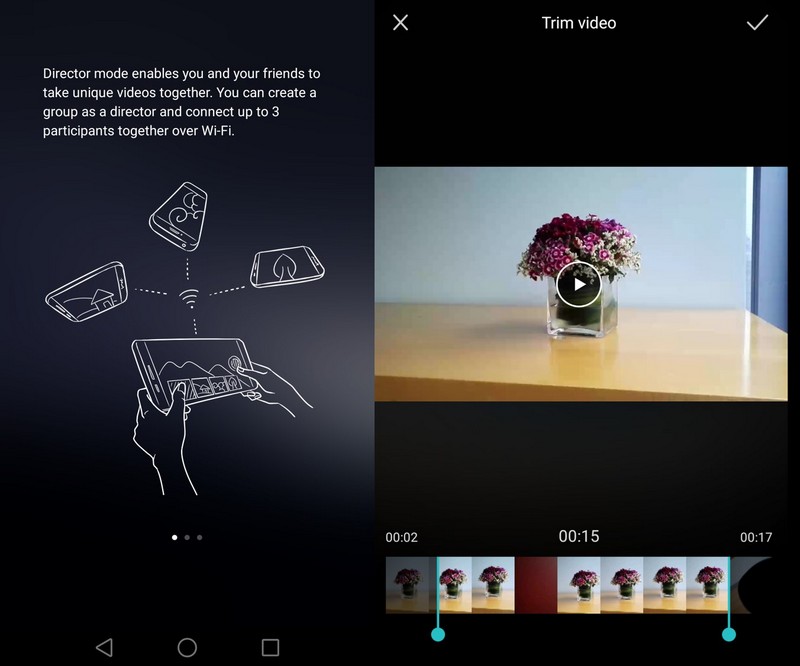
When it comes to video recording, Huawei has a cool app called ‘Director mode’ which lets you and your friends capture multi-angle videos by connecting up to 3 devices, after which the footage is transferred and edited on the Huawei smartphone.
Winner: Huawei Mate S, since image quality is where it truly matters.
Software
Huawei has included its EMUI (Emotion User Interface) which does away with the app drawer and puts all the apps on the desktop. Oppo is no different with its ColorOS. Both are easy to use or annoying depending on your preference for launchers.

What we liked are the different themes we could download and install, plus the ability to resize the fonts, create folders, choose the way the screens animate and the built-in widgets, especially Oppo’s full page music widget.
The Mate S comes with some knuckle-based gestures (yes, using your knuckles), which lets you capture parts of a screen and video screenshots, draw letters to boot specific apps and knocking on the device screen twice to wake up the phone.
It also comes with a one-handed mode which shrinks the screen down so your thumb can access any part of the UI.
The R7s also comes with a host of gestures to activate shortcuts, but what’s new is a convenient screen capture function that lets you capture more than one screen at a time, especially websites and WhatsApp messages which span several pages.
For software add-ons, there seemed to be less preloaded apps on Oppo’s R7s but those that are present include a backup and restore app, cloud storage and security app which scans your other apps and cleans up the device. For reading documents, it provided Kingsoft Office.
Huawei’s Mate S comes with a fun mirror app, a magnifier, a security app (which sends out more notifications than we’re used to) and also a backup feature. It also has a third-party app folder (called Top apps) which include WPS Office, Shazam and Clean Master, all of which can be easily removed.
We preferred the notification center on the R7s since it included some quick shortcuts and our notifications. In the Mate S, we had to switch to a separate tab in order to access our shortcuts, which is just an extra step.
Winner: The streamlined notification center and its multi-page screenshot tool made us choose the R7s, but the Mate S comes with a one-handed mode that is super useful. We’re not sure if we would use our knuckles that much, though.
Overall winner
It seems that the extra cash needed to buy the Huawei Mate S isn’t fully justified, unless you’re looking for a smartphone that comes with a fingerprint reader, NFC wireless technology and camera equipped with optical image stabilisation, plus a good balance between screen size and one-handed usability.
If those features are important to your purchase decision, then you would have to consider the Mate S or perhaps the Samsung Galaxy S6 Edge+, which is more powerful but also pricier.
However, if those features are not must-haves for you, we can recommend the Oppo R7s as one of the better mid-range smartphones available. It’s components, features and software come together to make a compelling offering, especially if it comes with an operator subsidy.

.png)
Related Stories:
Google Nexus 6P pre-order in Singapore starts Nov 2
Oppo Singapore plans online smartphone sales in 2016
Honor 7 review: A nice balance of price and performance
Huawei Watch makes its way to Asia, at long last
For more technology news and the latest updates, follow @dnewsasia on Twitter or Like us on Facebook.


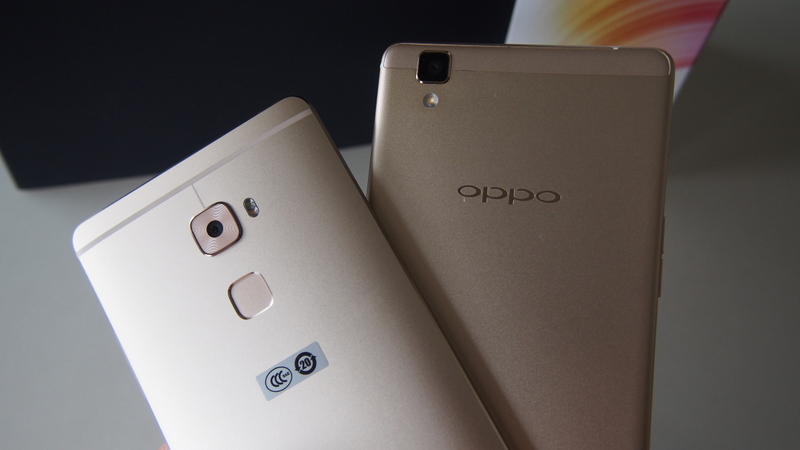
.JPG)
